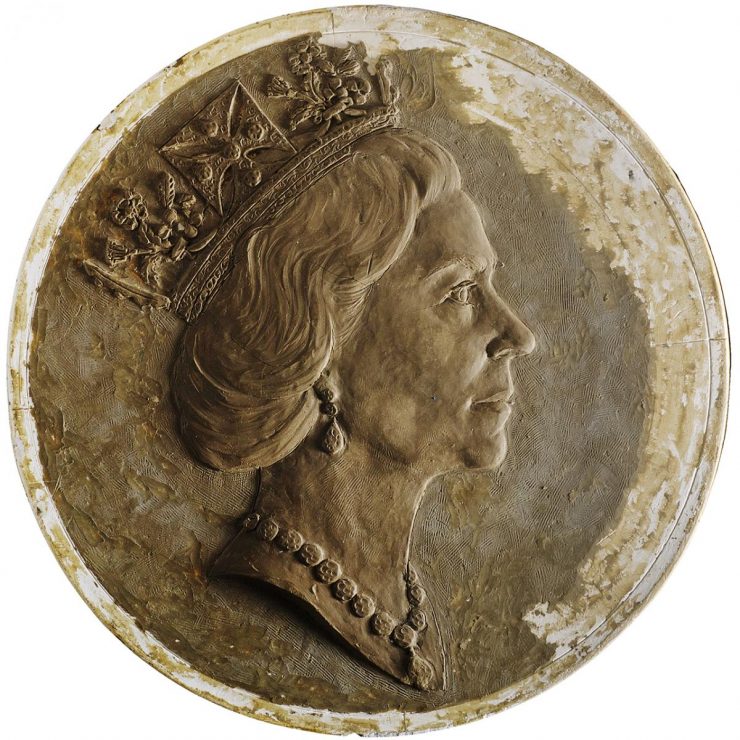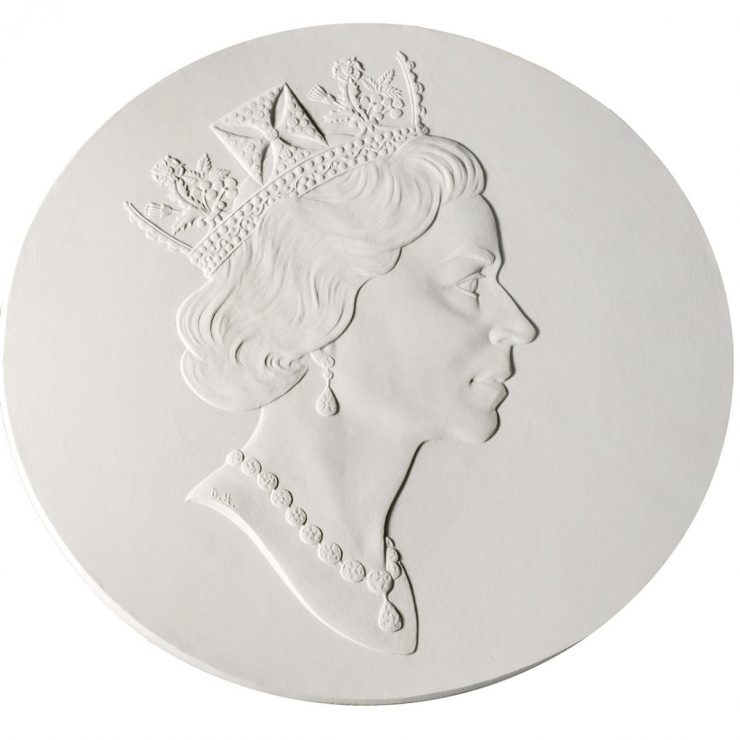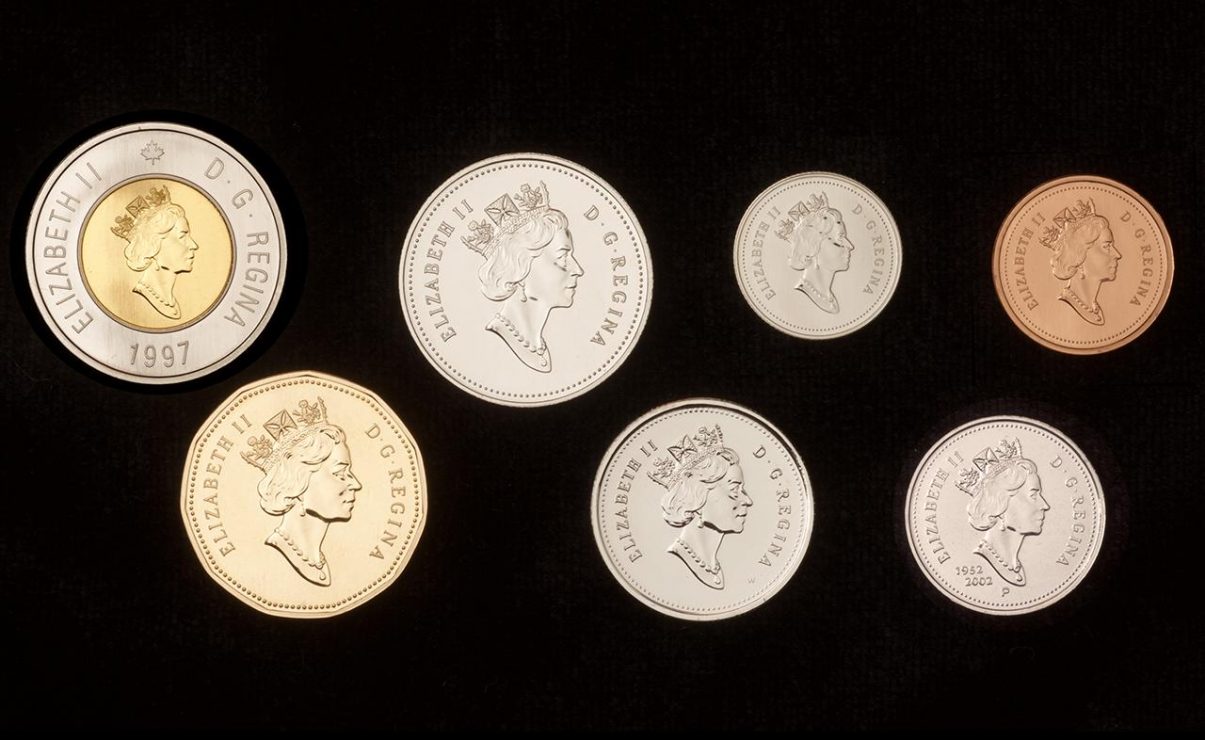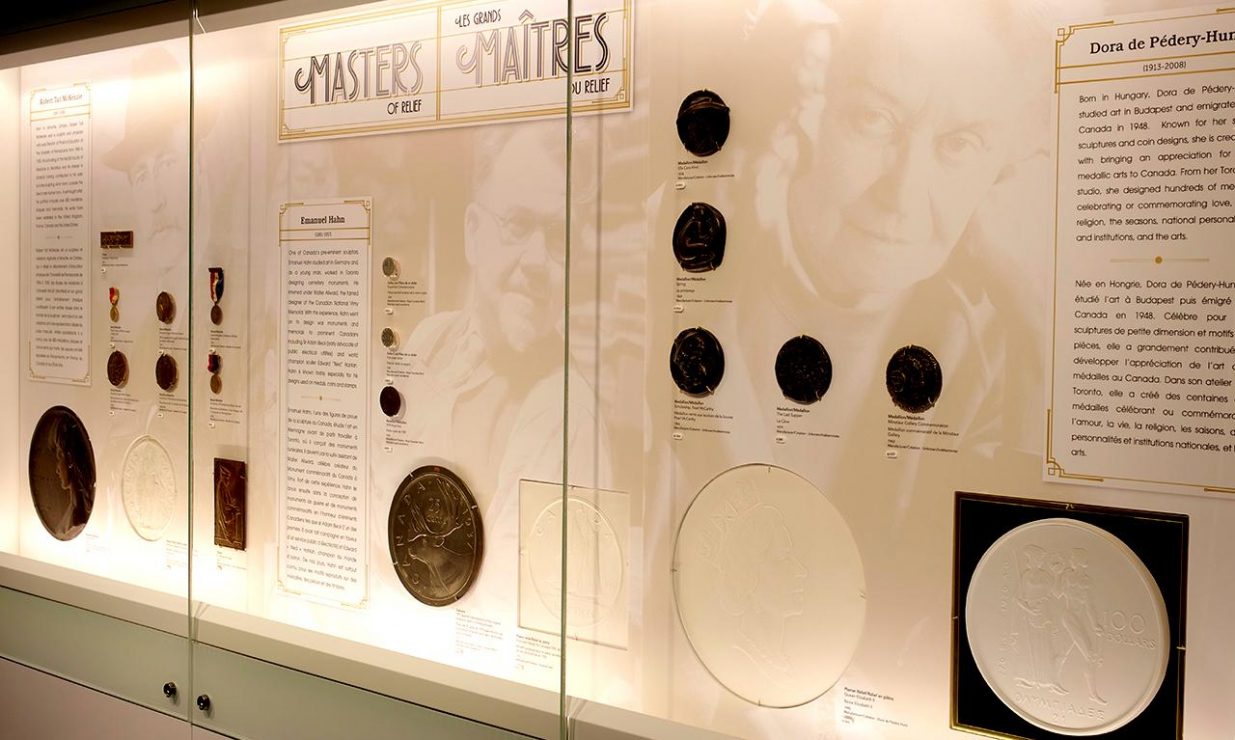Sculptor Dora de Pédery-Hunt
You will not see Dora de Pédery-Hunt’s signature on any coin, but you will see her initials on the Queen’s shoulder.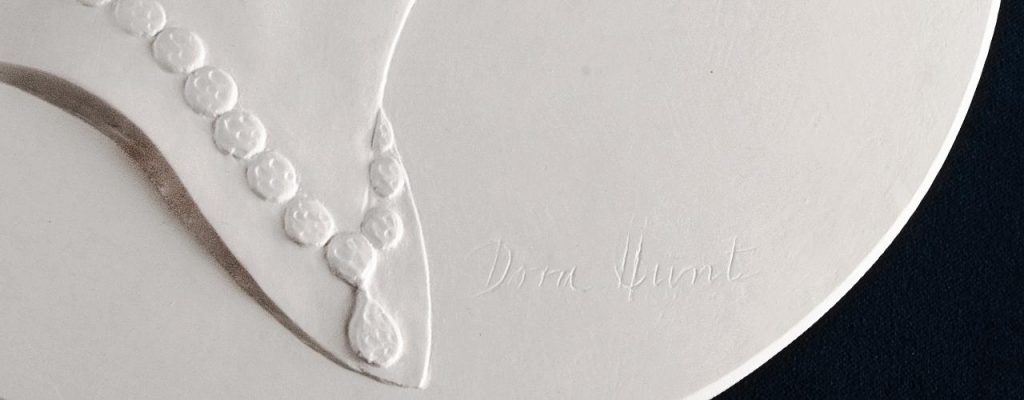
Limited Edition plaster reproduction of working model, #21 of 275. (NCC 2009.020.003)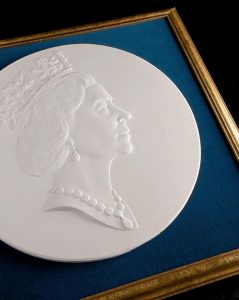
Dora de Pédery-Hunt’s work is as familiar as the change that jingles in your pocket. In all likelihood, you have come in contact with her work while using coins to pay for your morning cup of coffee. Dora de Pédery-Hunt was the first Canadian artist to design and sculpt an effigy of Queen Elizabeth II for coinage. Incidentally, this was the first time someone other than a British citizen had designed an official depiction of Queen Elizabeth II for this purpose.
When the Royal Canadian Mint (RCM) selected Dora’s design, she painstakingly began working on a clay model. All of the details had to be carefully considered, as the depth of the relief had to be suitable for producing coins. This model was then captured in plaster, where additional refinements could be made. Any errors could easily be corrected at this stage with the addition of more plaster. The size of the plaster is usually several times larger than the actual coin in order to capture all of the fine details.
At the time, there were many steps between the plaster model and the production of coins. Today, the process has been significantly refined. The plaster model is scanned in 3D and any final corrections or enhancements can be made digitally. Guided by this digital file, an engraving machine cuts the design into a piece of steel at the correct size of the coin. Known as a reduction punch, this piece of steel is then used to make the dies which will actually strike the coins. The tremendous pressure used to strike the coins wears down the dies, so the mint will periodically use the punch to create new dies.
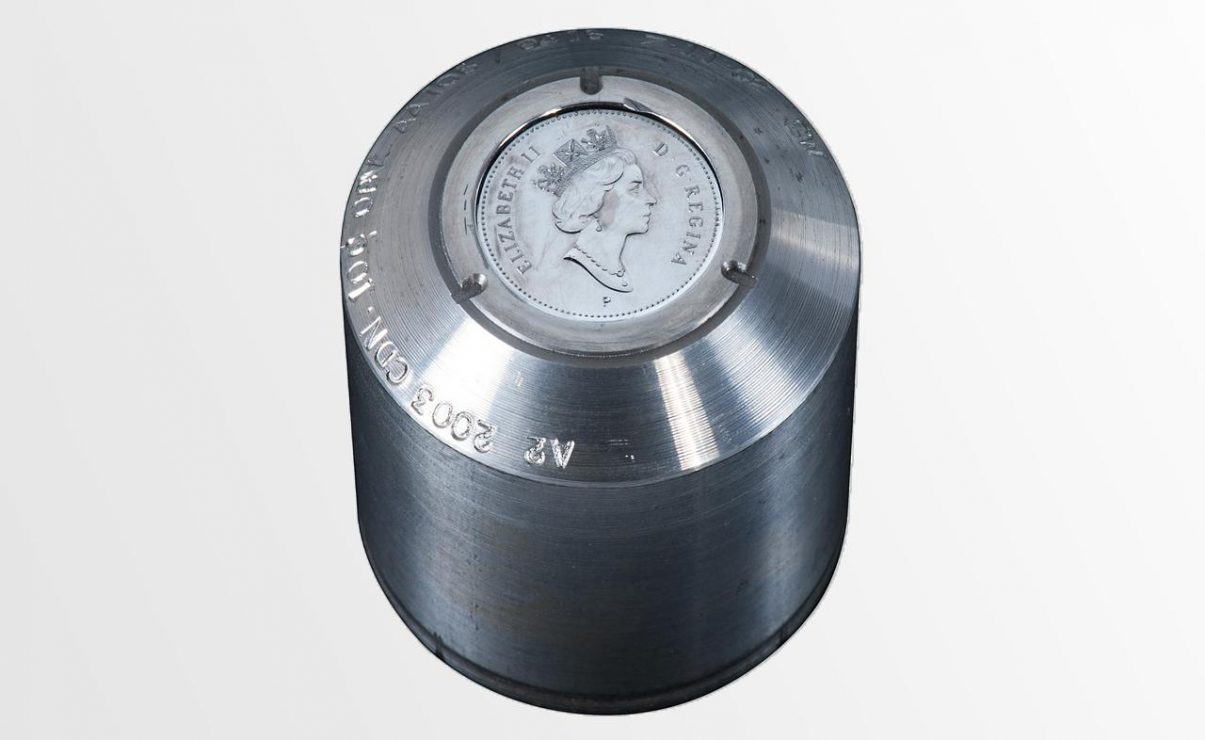
In 1999, the “P”, under the portrait on this punch, was added by the RCM to indicate a change in metal from nickel to multi-ply plated steel. (NCC 2010.058.006)
This portrait has appeared on all Canadian coins minted between 1990 and 2003.
The Museum Blog
Welding with Liquid
By: Stephanie Shank
In heritage conservation, broken metal objects can be reassembled with an adhesive most commonly used for repairing glass and ceramics.
Conserving the Spider Press
By: Stephanie Shank
Used extensively in the 19th century, this type of hand-operated press printed secure financial documents using the intaglio method.
How Does $ = Dollar?
By: Graham Iddon
How on earth did an “S” with a line or two through it come to represent a dollar? Any ideas? No? That’s OK, you’re in good company.
TTC Tokens and the Proposed 1978 Cent
By: David Bergeron
In 1977, the Royal Canadian Mint wanted to reduce the size of the penny in response to the rising price of copper. Little did the Mint know that the Toronto Transit Commission’s reaction would force the cancellation of the program.
The Vertical Note That Almost Was
By: Graham Iddon
The printing firms’ design teams went to work and came back with a surprising result: vertical notes.
The Coming of the Toonie
The life expectancy of a two-dollar paper note was about a year. But coins can last for more than 10 years.
The Canadian Roots of the “Greenback”
By: Graham Iddon
Successfully counterfeiting a bank note in the mid-19th century required an engraver with reasonably high talent and very low ethics.
